home > a lifetime evolution from drawing to painting > from 1920 to 1933
Relevant content of these pages has been moved to: www.piet-mondrian.eu
From Composition with Large Red Plane, Yellow, Black, Gray and Blue (1921) to Lozenge with Four Yellow Lines (1933) Mondrian works at some 125 compositions.
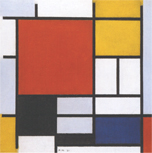 |
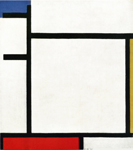 |
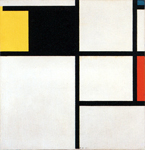 |
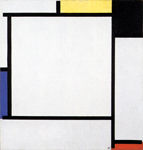 |
| A | B | C | D |
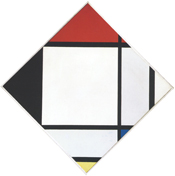 |
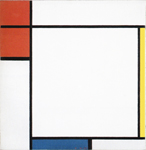 |
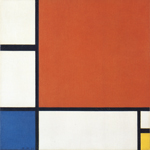 |
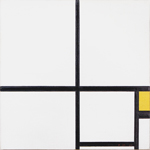 |
| E | F | G | H |
|
|||
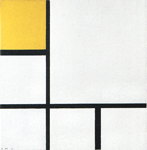 |
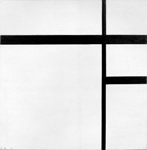 |
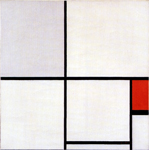 |
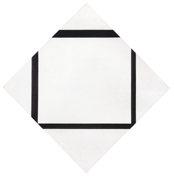 |
| I | L | M | N |
The square concept which has been developed between 1914 and 1921 becomes a constant feature of all the canvases Mondrian paints from 1921 on. The square is a constant feature but in a state of continuous evolution. Common denominator of all these works is the compenetration between unity and multiplicity where unity maintains its visibility.
In order to achieve this goal, the painter follows different composition patterns:
Pattern 1: Examples of this are, for instance, compositions B, D, F where a well identifiable white square field remains in a state of unstable equilibrium between areas of different sizes and colors.
Pattern 2. Examples are compositions A, C where the square proportion multiplies and changes, appears and disappears.
Pattern 3: Examples are E, N. By adopting a lozenge format Mondrian seeks to increase the dynamic influence of the perpendicular lines. In E a square proportion is the result of two opposing rectangular areas while color accents increase the asymmetry.
The four lines forming the square field in Lozenge with Four Lines (1930) (N) differ in thickness, which increases as we proceed clockwise from the vertical on the right. We thus see a simultaneously changing and comparatively constant square. A dynamic and relatively multiple unity. Three years later a similar pattern, adding color, will guide Lozenge with Four Yellow Lines.
Pattern 4: Examples are G, I, L. The two perpendicular lines running throughout these paintings divide their surface into a series of open sections that expand, together with the lines, beyond the perimeter of the canvas toward virtually infinite space. We see the inner sections as squares only by relating them to the perimeter of the painting. These compositions are therefore in dynamic equilibrium between a space expanding to infinity and the same space momentarily concentrated in finite and more stable relationships. The square becomes here relatively multiple while opening up to color. In Composition with Yellow and Light Gray (1930) (I) we observe seven square areas with four of them which are only very slightly different from one another.
Pattern 5: Examples are H, M. These compositions are born out of the meeting of two perpendicular lines that run through the center of the canvas to generate four areas with proportions not too far removed from equivalence. The lower right area is further divided by three segments that work with the two lines to produce a square area and a smaller colored surface to its right. The three areas that remain open seem designed to express possible variants of the square that remains closed. The painter appears to have wished to express various possible squares simultaneously a moment before or a moment after they attain equivalence, to express a variety of possible unitary syntheses, i.e. to multiply unity.
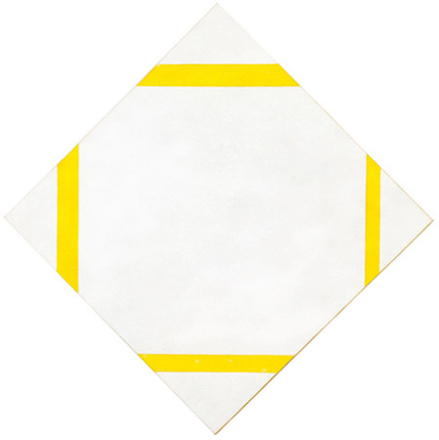 |
Lozenge Composition with Four Yellow Lines, 1933, Oil on Canvas, cm. 80,2 x 79,9 (sides), Gemeentemuseum, The Hague, The Nederlands |